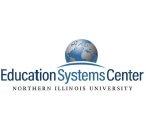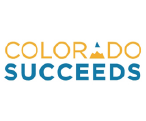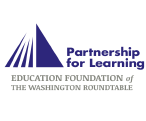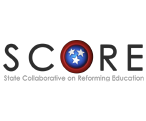

The Big Blur
January 19, 2023
At a Glance
An argument for erasing the boundaries between high school, college, and careers, and creating one new system that works for everyone.
The Problem
It’s time to give up tinkering and instead take on a radical rethinking and restructuring of grades 11 through 14—the last two years of high school and the first two years of college—in order to increase success for all. The biggest structural barrier to increasing college completion rates and career success is the enduring and seemingly intractable disconnect between high school, higher education, and our workforce systems. They can be difficult to navigate and are misaligned, with incompatible curricula, instruction, expectations, and support services. They work better for those who are financially secure and well-connected, but not well enough for the vast majority of young people across the country.
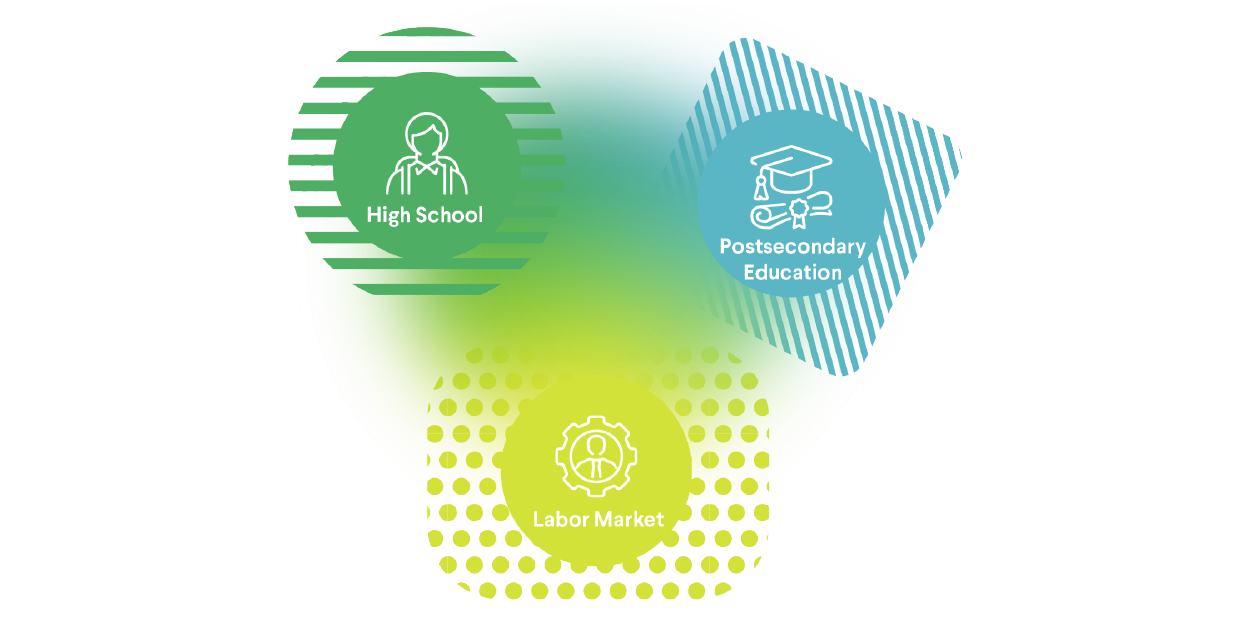
The Solution
We believe a system that would more effectively support older adolescents’ success in college and careers and eliminates many transition barriers is feasible and has the following features:

Incentives

Alignment

Governance

Staffing
The Outcome
The Big Blur erases the arbitrary dividing line between high school and college and opens the opportunity for all 16-year-olds to start on a path toward a postsecondary credential and preparation for a career. Two years of college are free to everyone, just like the 10 years of primary and secondary school that came before. Some may want to think of it as two years of college included in high school or two years of high school included in college. But this vision is far more revolutionary. Read more here.
Big Blur Policy
We are elevating system changes made in a handful of leading-edge states across the political spectrum. We are accelerating their impact, drawing from those experiences to map the road toward the Big Blur, and encouraging and supporting other states to do the same.
We are currently convening nine advocacy organizations in a Big Blur Policy and Advocacy Action Lab to support leading states as they work to create the policy conditions necessary to support implementation of the Big Blur and contribute to the development of a state policy framework to guide next steps in the field.
Big Blur State Policy Framework
In version 3.0 of the Big Blur State Policy Framework —which is a living document—JFF outlines the steps states can take toward fully adopting each of the Blur’s four key components and creating a more effective system for grades 11-14.
The framework provides examples of how each of the key components of the Big Blur (incentives, alignment, governance, and staffing) evolves from a fragmented to a fully transformed state policy environment. It describes a continuum of four types of state policy environments that states currently have or will experience on the road toward a fully reimagined system of education-to-career pathways that work for all students.
As states seek to make key transformations, they move toward creating a policy environment that entirely erases the boundaries between high school, college, and careers, ultimately creating a revamped and new education system that works for all students. Readers can use the framework to assess their state and understand areas in the early stages of blurring and those that are further along.
JFF makes periodic updates to the framework to account for new insights and exemplars in policy and practice gathered from the field. We are always looking for strong examples of blurring in states and local areas. Please contact us to share your feedback and examples by emailing blurinfo@jff.org and including “Big Blur” in the subject line.
Trending Toward the Blur: Criteria for Identifying and Developing Big Blur Models
We are accelerating the shift toward a bold new vision for education—one that erases the outdated boundaries between high school, college, and career preparation and blurs the lines between learning and work. This draft document outlines key criteria for developing and scaling “blurred” learning models that empower young people to transition into quality careers by their early 20s. Read the criteria to explore how your model or program can embrace this vision.
We need your help with the Big Blur criteria: We invite you to test, modify, and amend these draft criteria as they apply to grades 11-14 programs, institutions, and systems—those you lead and those of others. Please help us make this a living document that reflects your best ideas for today’s learners:
- Describe your blurred or blurring education system, program, or institution and how it aligns with the criteria.
- Provide an honest critique of these criteria, including what’s missing and how the document could be improved and edited.
- Let us know if you would like to connect with others implementing blurred models.
Please send comments and questions to Kyle Hartung at blurinfo@jff.org
Additional engagements include:
Colorado Governor Jared Polis and the Colorado State Legislature are using The Big Blur as a way to frame and focus a range of efforts to create stronger connections between education systems, workforce development, and economic needs, including a task force which state lawmakers nicknamed “The Big Blur Task Force.” JFF advised and co-authored the final recommendations of the task force.
Partnering with and providing strategic support to high schools and district leaders, Institutions of Higher Education, government departments, and employers as part of a Delaware Pathways & Rodel Foundation initiative. This initiative aims to refine and implement a 1+1 educational model in the three vocational-technical school districts across Delaware for students to receive one year of college credit and/or complete one year of a Registered Apprenticeship Program before they graduate from high school.
Partnering with IBM to support 17 P-TECH schools in the U.S. and Canada to spark bolder innovation in employer-connected college and career pathways models that can inform and facilitate systems change at scale.
- Convening and supporting – along with other leading national organizations – a cohort of five innovative intermediary organizations and their partners in a new initiative –Launch: Equitable & Accelerated Pathways for All. This initiative aims to design next-generation pilots of strategy and policy solutions to transform and reimagine the education-to-career ecosystem.
Big Blur in the Media
The ideas presented in the Big Blur continue to gain interest in the field. Learn more about what others are saying and join the conversation:


From Red States & Blue, Collaborating to Create Pathways to Future for Students
The 74

Five things to know about how Colorado leaders propose to reshape workforce education
Chalkbeat

The Big Blur in Delaware: Learning by Doing
NBC Nightly News: Kids Edition
Video starts @ 7:13

The Big Blur: Combining the End of High School with the Start of College
Designing Education

Blurring the Line Between High School and College
Franklin Covey: Dustin Odham Podcast

Future of Learning
The Hechinger Report

The big blur: How to erase the boundaries between high school, college, and career
Fordham Institute

Jared Polis: How Blurring the Lines Between High School, College and Careers Can Set More Teens Up for Success
The 74

Young adults are ready much earlier than we think!
Disrupt Education Podcast

What happened when a South Carolina city embraced career education for all its students
The Hechinger Report

Is the push for career education in schools prioritizing business over students?
USA TODAY
Watch
Learn more about The Big Blur and how leading practitioners, experts, and thought leaders are engaging with the ideas.
The Big Blur in Delaware: Learning by Doing
NBC Nightly News with Lester Holt: Kids Edition
JFF Vice President of Education Joel Vargas talked to Rehema Ellis for NBC Nightly News with Lester Holt: Kids Edition about The Big Blur and how a program in Delaware is combining school and careers so students don’t have to make the choice between earning and learning. Watch the segment on NBC and read our policy blog for more about the Big Blur in Delaware.
Blurring the Lines at the Sturm Collaboration Center
Arapahoe Community College Sturm Campus 2023
Watch how Arapahoe Community College’s Sturm Collaboration Center is blurring the lines between K-12, postsecondary, and workforce with their partners the Douglas County School District, the Colorado State University System, Industry Partners, A/D Works!, and the Castle Rock Economic Development Council to create unique and streamlined learning opportunities for students beginning in high school.
The Big Blur: Is 2022 the Beginning of the End for the Traditional Transition From High School-to-Postsecondary-to-Work?
JFF Horizons 2022
Joel Vargas and Kyle Hartung from JFF discuss the Big Blur with panelists working at the forefront of innovations that blur lines and integrate learning and work at the local, state, and federal levels. Panelists consider what it will take to open the opportunity for all students to start on a path toward a postsecondary credential and prepare for a career. Panelists: Brent Parton, Acting Assistant Secretary, Employment and Training Administration, U.S. Department of Labor; Scott Laband, President, Colorado Succeeds; Lydia Logan, Vice President, Global Education and Workforce Development, Corporate Social Responsibility at IBM; Cate Swinburn, Co-Founder and President, YouthForce NOLA.
The Big Blur: Reimagining the Transitions Between Grade 11, Postsecondary, and Career
JFF Horizons 2021
JFF Associate Vice President Lexi Barrett, Associate Vice President Kyle Hartung, and Vice President Joel Vargas present JFF’s vision for a reimagined transition and welcome responses from national leaders in K-12, postsecondary, policy, and business. Respondents: Kim Hunter-Reed, Commissioner, Louisiana Board of Regents, Russell Lowery-Hart, President, Amarillo College, and Michael Matsuda, Superintendent, Anaheim CA Unified School District.
How Might We Reinvent Higher Education, High Schools, and the WorkForce… All Together?
The Future Trends Forum 2022
Joel Vargas and Kyle Hartung from JFF join Byran Alexander’s Future Trends Forum – a weekly discussion event that analyzes pressing issues at the crossroads of education and technology – to engage in a conversation about The Big Blur with Forum participants.
A Blurred Vision for Good
Horizons podcast
In the sixth episode of the Horizons podcast, host Tameshia Bridges Mansfield looks back at the in-depth discussion about The Big Blur from Horizons 2021.
Speaking Engagements
Since the publication of The Big Blur paper, we have participated in speaking engagements, presentations, and keynotes for audiences of educators, employers, philanthropy, policymakers, and community-based organizations, including:

Pathways to Prosperity
Our national movement transforms how U.S. education and workforce systems prepare young people for meaningful careers. With over a decade of leadership in the pathways movement, we bring incomparable expertise, collaboration, and a relentless curiosity…

The Big Blur: Are You Doing It? Probably Not. And that’s OK if we stay focused on the big idea.
And that’s OK if we stay focused on the big idea.

Hybrid Institutions Point the Way Toward the Big Blur
May 31, 2024
Toward the Big Blur: Reshaping Teaching for Grades 11-14
Jobs for the Future’s (JFF) vision for the Big Blur calls for entirely new educational institutions and systems to better prepare 16-to-20-year-olds for college and careers. This paper examines how instructor preparation, state accountability systems,…

Improve Today, Invent Tomorrow: A Call to Reboot Dual Enrollment
A Call to Reboot Dual Enrollment Dual enrollment and early college increase the number of high schoolers who succeed in college. Over the past two decades, they’ve grown from boutique opportunities to widespread college success…

Toward the Big Blur: State Financing Models That Promote New Education-to-Career Structures
Jobs for the Future’s (JFF) vision for the Big Blur calls for entirely new educational institutions and systems to better prepare 16-to- 20-year-olds for college and careers. This paper examines a new type of financing…

Toward the Big Blur: State Governance of a Unified Education-to-Workforce System That Works for Everyone
Jobs for the Future’s (JFF) vision for the Big Blur calls for entirely new educational institutions and systems to better prepare 16-to-20-year-olds for college and careers. This paper examines the new type of governance needed…
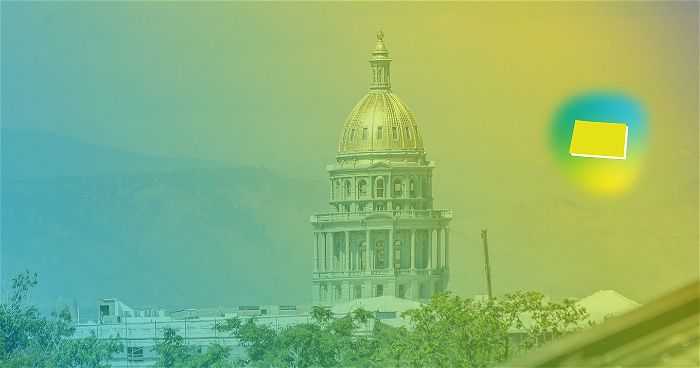
Toward the Big Blur: Momentum and Progress in Colorado
In this first in a series of case studies featuring leading-edge states, Jobs for the Future (JFF) documents key policies that Colorado is putting into place to erase the arbitrary boundaries between high school, college,…

Toward the Big Blur: Momentum and Progress in Indiana
In our latest case study featuring leading-edge states, Jobs for the Future (JFF) highlights key policies and initiatives Indiana is implementing to move toward erasing the arbitrary boundaries between high school, college, and work and…

